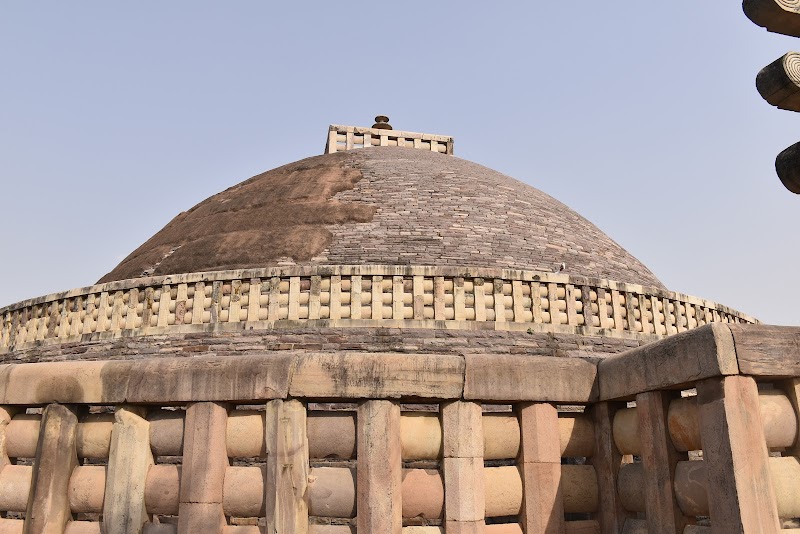
Sanchi Archaeological Site Adventures
Sanchi Archaeological Site is a UNESCO World Heritage site featuring the oldest stone structures and stupas of Buddhist art in India, offering visitors a rare glimpse into ancient civilization and serene outdoor spaces.
About Sanchi Archaeological Site

Located in the state of Madhya Pradesh, India, the Sanchi Archaeological Site is one of the oldest and best-preserved Buddhist complexes in the world. It centers around the Great Stupa, originally commissioned by Emperor Ashoka in the 3rd century BCE. The site covers a small hilltop area surrounded by natural vegetation and pastoral land. Its landscape is dotted with stupas, monasteries, temples, and ancient gateways (toranas) elaborately carved with scenes from the Buddha's life and Jataka tales. The architectural style represents early Indian stone craftsmanship and religious art. The nearby natural environment consists of open scrubland and grasslands, providing a tranquil atmosphere for visitors. Beyond its cultural and historical significance, the site offers opportunities for walking, photography, and cultural appreciation under open skies punctuated by local birds and native flora. Visitors can explore the massive hemispherical stupas, intricately decorated gateways, and monastic cells, learning about Ashokan Buddhism’s role in shaping Indian heritage. The combination of rich archaeology and outdoor ambiance makes Sanchi a vital destination for history enthusiasts and casual travelers alike. The site provides interpretive signage and maintains pathways that allow safe and respectful exploration of the ruins. The surrounding region retains a rural character, with small local communities supporting visitors with simple amenities. Its accessibility from Bhopal and the peaceful setting make it a rewarding day trip or an educational excursion into India's ancient religious traditions.
Highlights
The Great Stupa: India’s oldest stone Buddhist monument
Elaborate toranas (gateways) showcasing detailed ancient carvings
Monastic cells and stupas dating back over 2,000 years
Quiet hilltop paths offering views over the surrounding rural landscape
Notable Natural Features
Great Stupa (Stupa No.1)
The main hemispherical stupa built under Emperor Ashoka, protected by a stone railing and adorned with iconic gateways.
Toranas (Gateway Carvings)
Four ornate gateways around the Great Stupa, depicting life scenes of Buddha and stories from Jataka tales, considered masterpieces of Buddhist art.
Monastery Ruins and Smaller Stupas
Remnants of monks' quarters and smaller stupas located on the site, showcasing early Buddhist monastic architecture.
